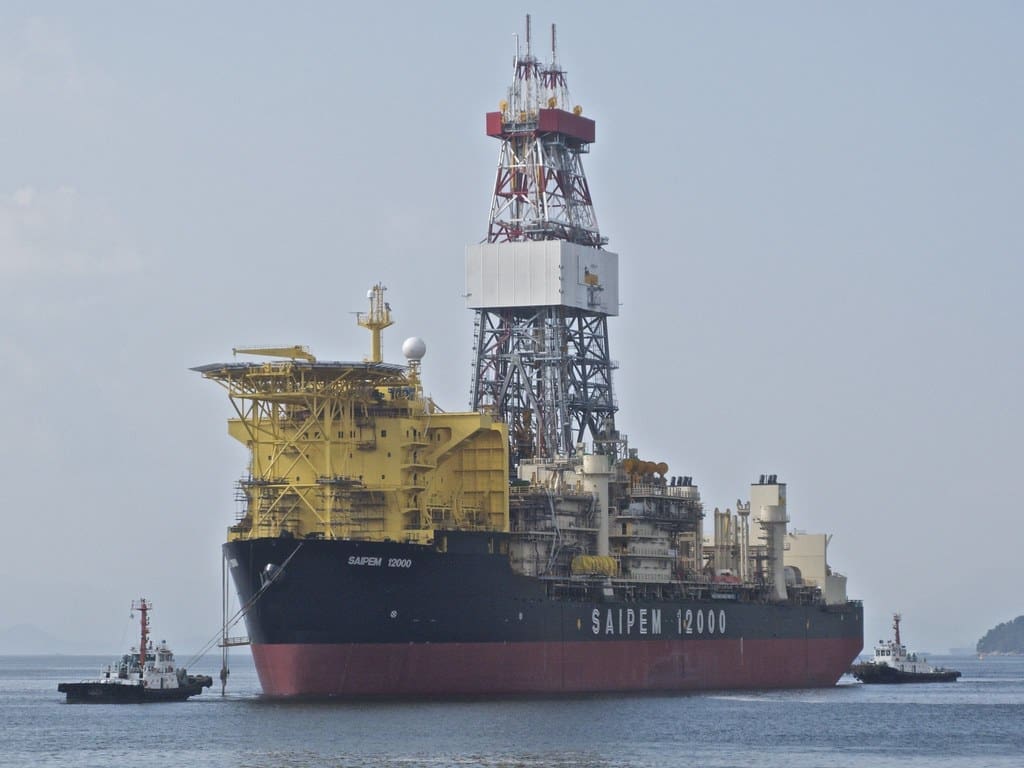Technology is creating opportunities to optimize operations and improve maintenance to extend the operational window of aging drillships. The American Bureau of Shipping (ABS) knows a thing or two about drillships having a dominant position in the market providing classification services to two-thirds of the global fleet. Matthew Tremblay, ABS Vice President of Global Offshore, takes a look at the trends.
It’s a profitable time to own a drillship. With capacity tight, day rates are edging ever higher with high spec deepwater drillships now commanding day rates north of US$500,000. Some analysts predict that rates for ultra-deepwater drilling in the hotspots off South America and in the US Gulf of Mexico could potentially top US$600,000 by 2026[1]. The tight market – a result of limited new builds and low levels of rig reactivation – means rig companies have every incentive to minimize downtime and keep working units operational for as long as possible.
The capacity squeeze follows a ten-year drought of new construction activity. Even now, despite stable oil prices and climbing day rates, drillers remain reluctant to commit to new build activity. As a result, the typical asset age of the drillship fleet is between 13 and 15 years. Ensuring these more mature assets are structurally sound and reliable means there’s a growing impetus to rethink current maintenance regimes – an evolution of thought that ABS actively continues to progress, drawing on both our expertise in classification services and the offshore industry to find new ways to deliver safer and more sustainable solutions for clients.
Optimizing current capacity means anticipating and pre-empting any issues in order to minimize downtime, improve efficiency, and prolong the life of the assets. Tracking and validation by ABS of the evolved maintenance regimes provides reassurance to operators and the general public that vessel age isn’t a barrier to safe and effective offshore operations. And there’s an added benefit: extending the viable operational window of these assets is not only good for business, but it also has the potential to deliver on sustainability and emissions reduction targets. ABS is at the forefront of sustainability goals, including finding ways for operators to configure their existing assets to work in more efficient ways. The Enhanced Electrical System notation (EHS-E), for example, allows dynamically positioned units to operate more efficiently and safely with less generators online operating at higher loads when feasible. Operating in this closed bus arrangement allows operators to burn fuel more efficiently and further reduce emissions.
Maintenance 2.0
The good news is that a number of technological trends have converged to make this possible at just the right time. First, after a slow start, the Internet of Things (IoT) is now a reality in many industrial settings – and that includes offshore. IoT sensors on the hull and key machinery constantly capture data to pick up temperature fluctuations, unusual vibrations, or noises that might be early indications of an issue that needs attention.
The second trend is connectivity so that these valuable data points can be transmitted back to shore for near real-time analysis. Starlink and other low earth orbit satellite constellations have transformed this capability, reducing latency to 20 – 60 milliseconds and offering 220+ Mbps download speeds, enabling low cost, reliable and high-speed connectivity for IoT applications at sea. This increased bandwidth has many maritime applications, not least enabling ABS to undertake remote surveys that were not previously possible, enabling clients to interact within a mobile-friendly environment to easily capture and transmit all required videos, images, and documentation while onboard, yielding large time and cost savings.
However, every digital asset introduces another potential cyber vulnerability so it’s vital that drilling companies seeking to leverage this new data-rich, hyper-connected capability do so in parallel with the deployment of enhanced cyber-security protocols, both at sea and on shore. This should not be an afterthought but an integral part of the wider strategy.
Data-based decisioning for smarter maintenance
The convergence of these trends could prove transformative when it comes to calibrating maintenance regimes, with highly targeted early interventions replacing expensive reactive remedial action that then derails multi-billion-dollar E&P projects. Rather than prescriptive, invasive inspections that come with a hefty price tag, we now see the emergence of data-based decision making to action preventative maintenance at a fraction of the cost.
Ballast tanks and thrusters, for example, need regular check-ups for corrosion, structural issues, or fatigue, but these inspections can be intrusive and expensive, not to mention risky for personnel. Remote inspections using drones and remotely operated vehicles can reduce times, costs, and risks, with video output often providing greater visual clarity than traditional diver inspections, aiding the rigor of an inspection and helping operators make smarter maintenance decisions.
Even special periodic surveys (SPS) and under water inspections in lieu of dry docking (UWILD) surveys can be undertaken remotely using small remotely operated vehicles (ROVs) for the visual aspects. Small ROVs and specially designed eddy current systems have been recognized for use by ABS Approved Suppliers to complete full UWILDs on drilling vessels while offshore and during continued operations. This process can save between 14 and 21 days in costly downtime. And it’s not just time and money that it saved – by removing humans from some of the more dangerous aspects of surveying, it also makes this process safer.
The benefits are hard to deny: increased uptime, improved efficiency, and better safety.
When it comes to drillships, maintenance regimes don’t make the headlines – unless something goes terribly wrong. But operations and maintenance are where some of the most important breakthroughs are being made, with drillers leveraging the power of digitalization to not only work safer and more efficiently but also to identify new ways to reduce emissions. The possibilities of harnessing data and analytics to extend asset life and reduce emissions could reset expectations for a safer, greener, and more profitable fleet, whatever its age.
[1] Westwood Global Energy Americas director, Cinnamon Edralin, quoted at Offshore Support Journal Conference, June 2024 https://www.rivieramm.com/news-content-hub/news-content-hub/drillship-bonanza-utilisation-to-hit-97-in-2025-81978
Matthew Tremblay serves as ABS Vice President of Global Offshore Markets, based at ABS Corporate Headquarters in Houston. In his current role, Mr. Tremblay holds the global responsibility for strategic planning and client development within the offshore market sector.
Throughout his 27-year tenure at ABS, Mr. Tremblay has served in various engineering and leadership positions throughout the United States and Asia, including Pacific Division Vice President of Operations based in Singapore and Vice President of Engineering for the ABS Americas Division.
Mr. Tremblay graduated from the Massachusetts Maritime Academy, with a Bachelor’s degree in Marine Engineering. He is also a member of the American Society of Naval Architects and Marine Engineers (SNAME).







